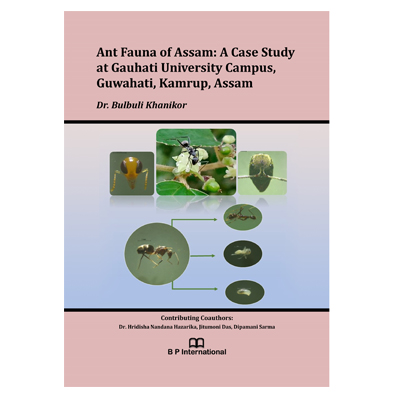This book is the result of a need for documentation of myrmecofauna in a diversity-rich state like Assam. We strongly felt the demand for a book on ants with photographic images and started working on ants to address the gap in 2018 which materialized in 2023.
The book is targeted to a broad group of readers viz. students of Zoology, students and researchers in the field of Entomology, amateur scientists, naturalists, pollination and conservation biologist, wildlife personnel, and common people as a whole who are enthusiastic to know more about the most familiar creature abundantly present inside and outside houses. The book can also be used as a field guide of myrmecofauna not only in Assam but also in the Northeastern part of India. It would be helpful for students of undergraduate, post-graduate as well as Ph.D. curricula of Zoology and Wild-Life Biology for carrying out project work on ants and ant-related studies. As far as possible, the book is written in simple language to make things understandable to students and even to layman people.
This book contains three chapters. The first chapter includes the introduction to ants, taxonomic keys upto genus level in the tabular form primarily based on Bolton (1994), checklists of ants, morphological characters in the simplified form of 41 ant species along with their microscopic photographs, and brief information on their distribution, feeding, nesting habit, and pest/ predator status. Chapter II is devoted to ant-mimicking spiders. It comprises an introduction to ant-mimicking spiders, information on association with their model ants, a list of published ant-mimicking spiders along with their model ants in tabular form based on existing literature, and lastly brief discussion on ant-mimicking spiders in India and morphological description of 10 ant-mimicking spiders recorded in the campus of Gauhati University with microscopic photographs.
Since ants play many diverse roles in nature, their ecological role in pollination is the least studied and a topic of debate. The third or the last chapters discussed flower-visiting ants, their pollination roles, and contrasting pollinator deterrent roles based on existing literature and a comprehensive list of the roles of ants as pollinators, pollinator deterrents, or simply flower visitors. Lastly, 13 flower-vising ants recorded on the campus of Gauhati University are discussed.
I hope readers will enjoy reading this book and develop the curiosity to explore more about ants, ants- related fascinating ecological and evolutionary facts in nature.





